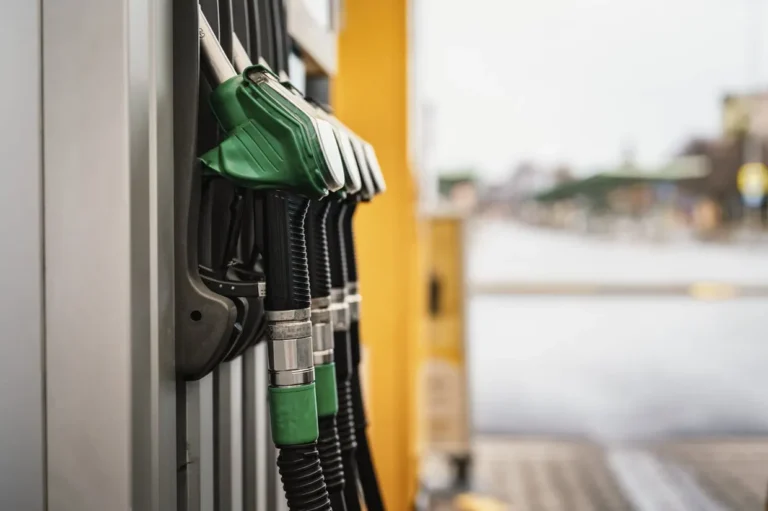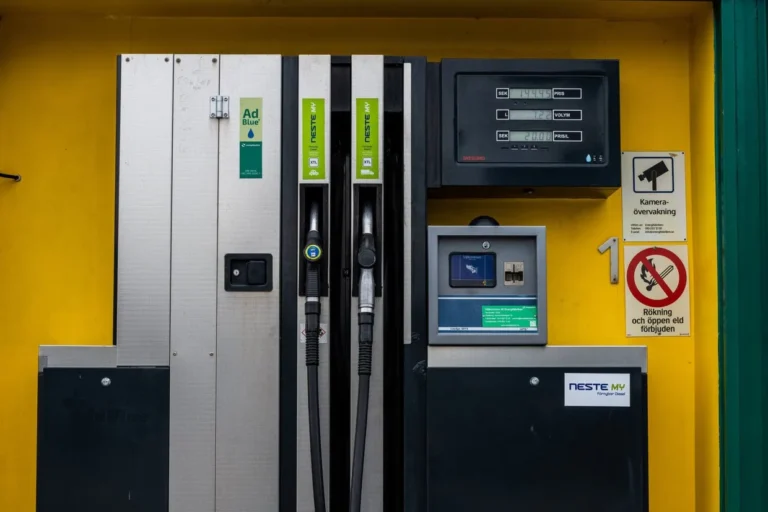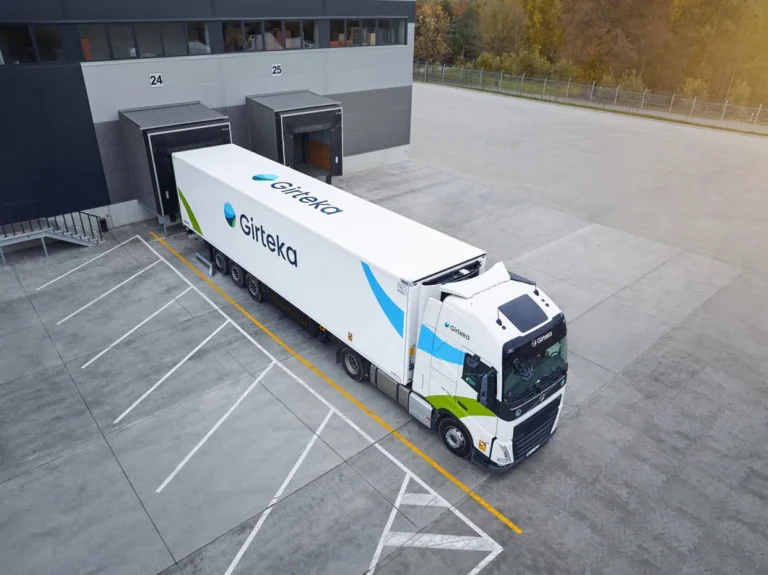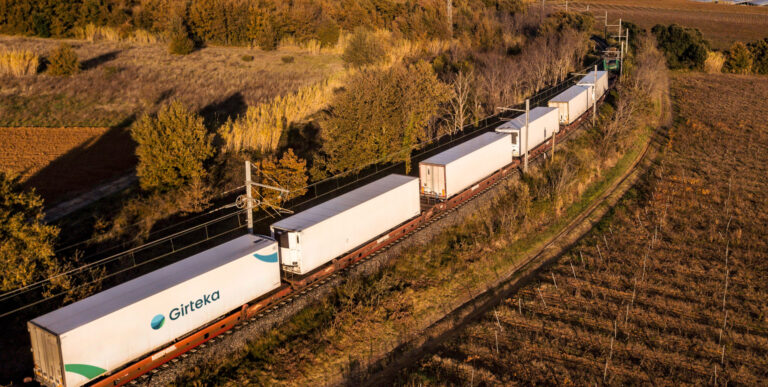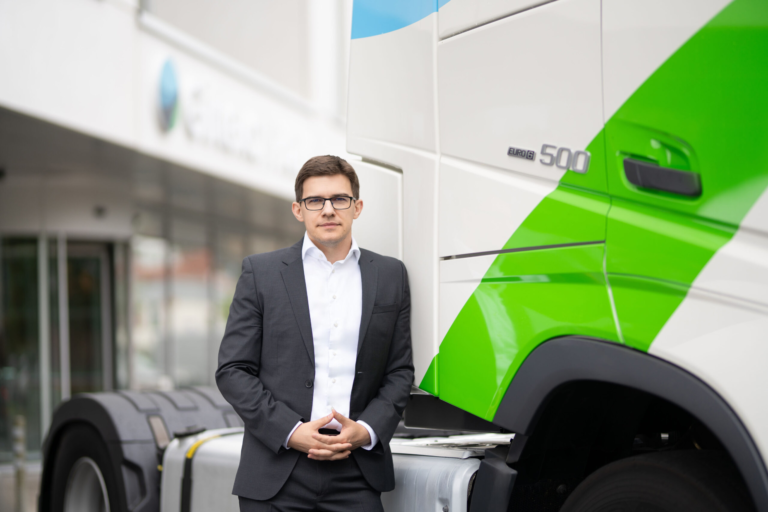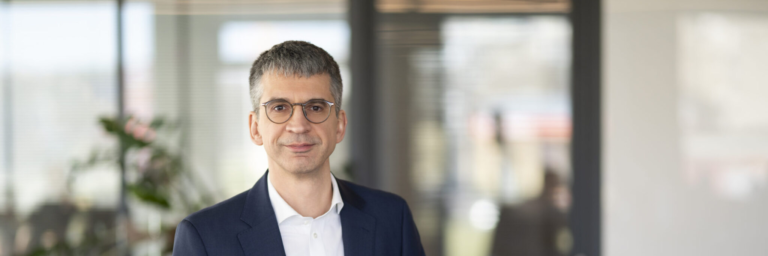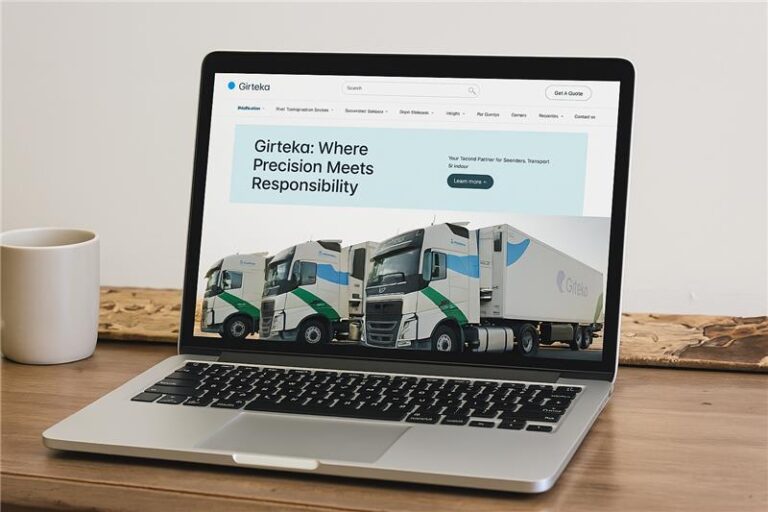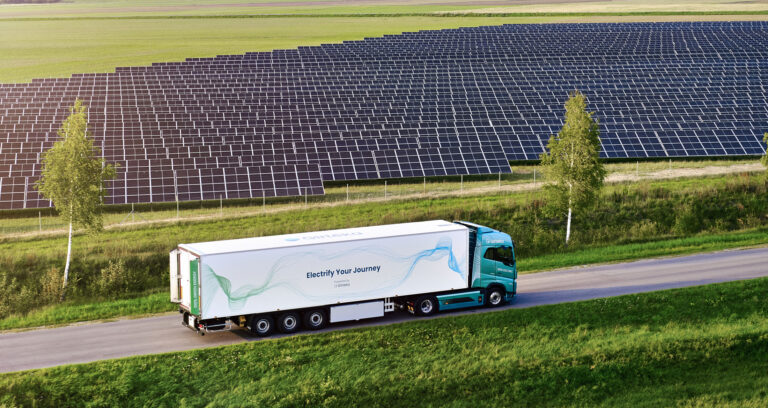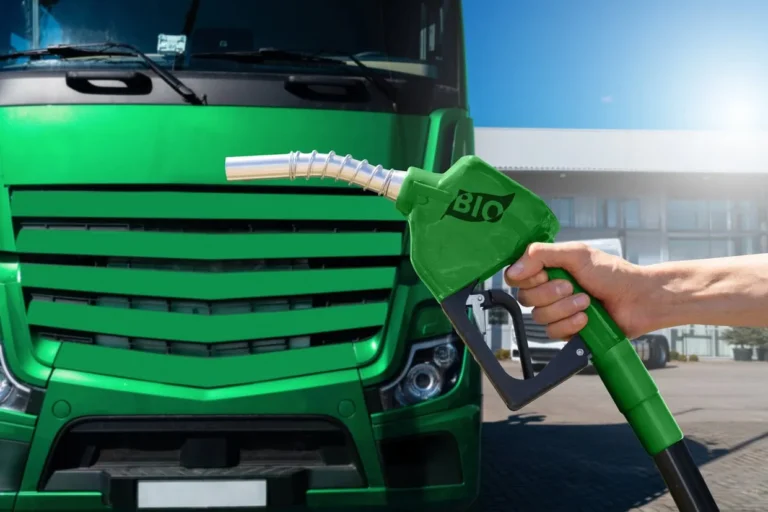Although Girteka is a road transport-focused company, its developed intermodal rail network only strengthens its business proposition. Intermodal services represent an economic and environmentally friendly solution for long-distance full truck load (FTL) deliveries, which the transport provider specializes in. Six years on, since the company first introduced the service, Girteka has transformed from an intermodal pioneer to an intermodal specialist, becoming the largest reefer carrier by intermodal transport in Europe.
Role of intermodal rail transport at Girteka
The pressure on the logistics industry to reduce its emissions is ever-growing. To achieve climate neutrality by the year 2050, as outlined in the European Green Deal, the EU targets a 90% reduction in greenhouse gas (GHG) emissions from the transportation industry, and every part of the sector will have to contribute to the reduction.
Aside of the obvious need to improve the efficiency of vehicle and fuel technologies, one of the solutions that the EU proposes is shifting transport activity to more efficient modes, such as from trucks to rail freight. A combined solution would help slash CO2 emissions significantly – with freight being transported by train (or ship) over a distance of more than 300 km and road vehicles functioning as the “last mile” transport, the EU states.
Intermodal rail transportation is one of the most environmentally friendly ways to move loads over long distances. It is estimated that without the need to re-load the cargo when switching between the road and rail, carrying goods by intermodal rail systems with electric propulsion allows the lane to save as much as 90% of CO2 emissions.
While there are currently no widely available trucks that are either battery-electric or hydrogen-powered and able to travel long distances, utilizing the already-built train network is a great, easily accessible solution that can help the road freight sector reduce its emissions. Recognizing this, Girteka continues investing in rail freight transportation as part of its commitment to sustainable development, an integral part of the company’s long-term strategy.
In 2021, with over 16,100 fully loaded trailers traveling on rail tracks and more than 15,2 million km covered throughout the EU, Girteka Europe West managed to save more than 14,4 million kg of CO2 emissions. The company achieved even greater results in 2022, saving more than 16,7 million kg of CO2 over a distance of 16 million km. This amounts to 16% of increased CO2 savings in 2022, compared to the year before.
“We are continuously developing our intermodal rail services and involving those clients for whom this mode of transportation was previously seen as unconventional or unreliable due to preconceived notions. In close cooperation with train operators, we are able to obtain a good quality product and change our clients’ opinions, successfully involving them in sustainable transportation,” says Larisa Senkevičienė, Project Manager at Girteka Europe West.
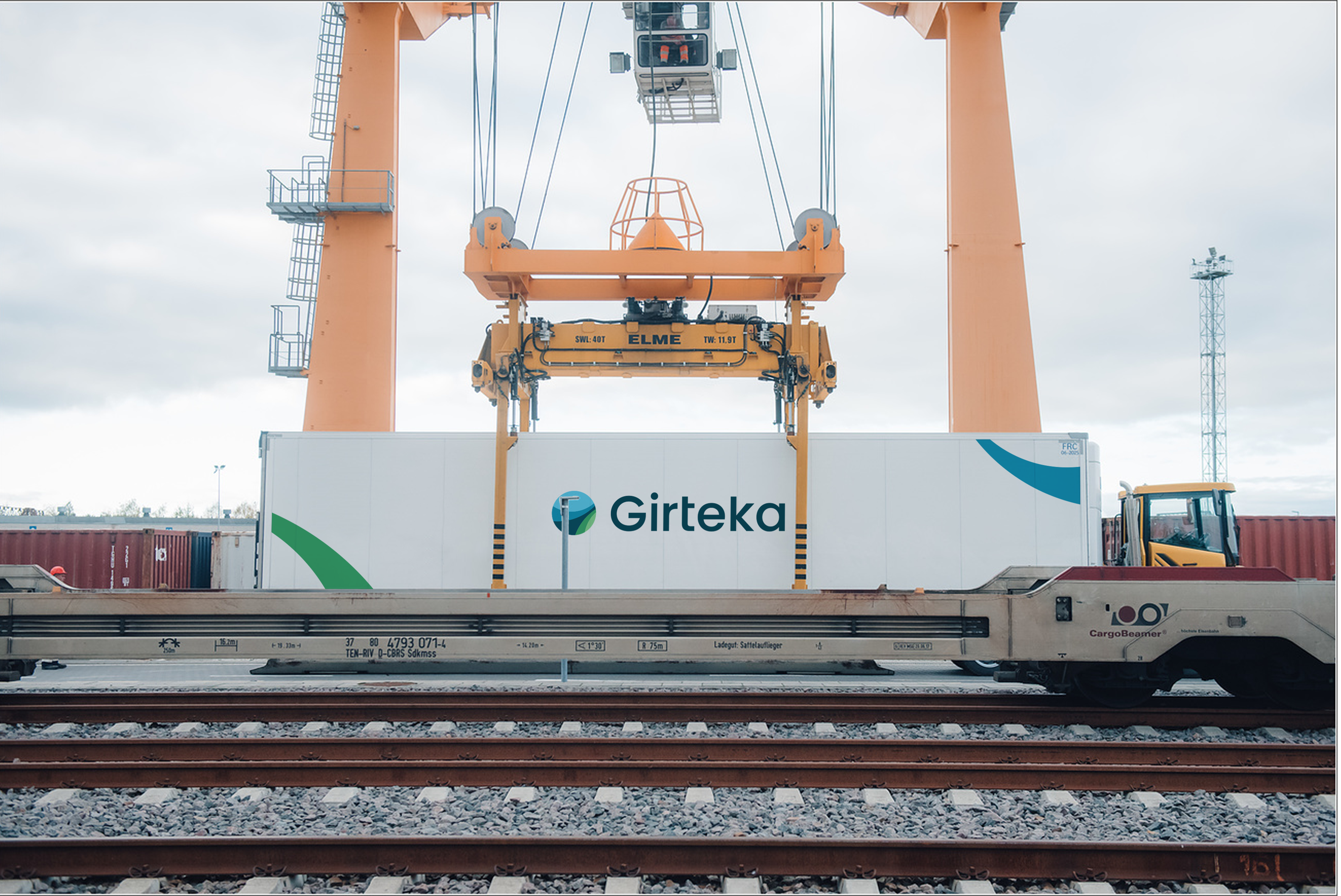
With the new rules on corporate sustainability reporting, starting 2025, logistics will be included in companies’ manufacturing cycle’s GHG emissions recording, prompting businesses to think hard on their sustainability options. It is no surprise then, that increasingly contracts with clients include requirements for CO2 emissions reduction. Some of Girteka Europe West’s clients specify a certain percentage of deliveries to be made particularly by way of intermodal transport. Others approach solely for the intermodal solution.
“More and more clients approach us for our intermodal rail network and our capabilities of organizing deliveries in this manner. We purposefully choose lines that have quick transit times and are most optimal and reliable. Moving loads in an environmentally friendly way is equally important for us, our clients, and our community,” says Senkevičienė.
What differentiates Girteka is that it owns all its trucks and trailers, making its intermodal solution completely end-to-end. The company controls the whole transportation process, so if there any disruptions when carrying trailers via rail, the logistics provider is always ready to immediately alleviate the problem and continue moving the trailer on the road.
Growth of intermodal rail services at Girteka
Transporting freight by utilizing rail when you are a road transport-focused company is definitely not an easy feat to achieve. Girteka first established its intermodal division and began carrying its clients’ goods throughout Europe by way of intermodal rail transport in 2017.
Today, the company has a considerably developed network in Western Europe, which is mostly electrified. Five main lines are used to transport goods, including between Luxembourg – France, Poland; and Germany – Italy, Austria. Around 550 FTL units are transported through these lines every week.
“Our main goal has always been to increase shipments in the lines that we use because they cover our main markets – Spain and Italy. We made the strategic decision that we will develop lines in all directions where we have the largest flows of shipments. This year we plan to include Poland, which is the third main market for us,” comments Senkevičienė.
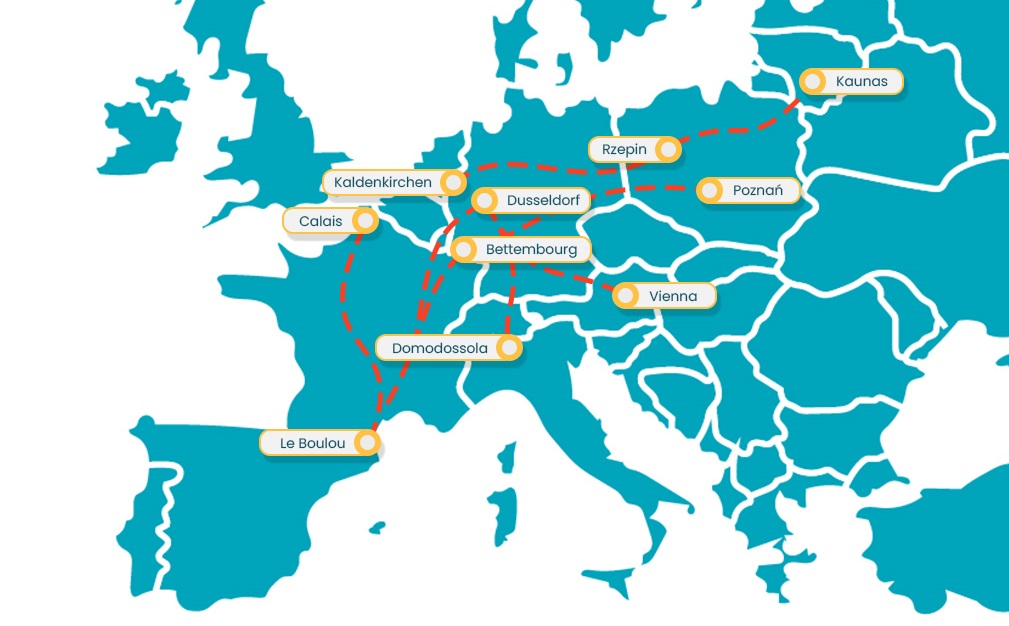
Our intermodal rail transport network in Europe
In 2021, for the second year in a row, Girteka Europe West doubled its intermodal rail transport capabilities, covering 5% of its total kilometres via this mode of transportation. However, the ensuing war in Ukraine, geopolitical tensions and economic instability arising from the energy crisis in Europe have hindered the development of the company’s intermodal services in 2022.
In addition, major railways in Europe began implementing infrastructure projects, resulting in restricted traffic on certain lanes, such as in the direction of Italy. Despite the disruptions, in 2022, Girteka Europe West saw an increase of 8% in shipments compared to 2021.
A major part in the successful growth of Girteka Europe West’s intermodal rail capabilities is played by its railway partners, including Helrom, CargoBeamer, and Lorry-Rail & VIIA Rail Motorways. In collaboration with the latter, the company has seen unprecedented growth: back in 2017, Girteka Europe West transported less than 1,000 loads with VIIA; today, both parties target more than 13,500 loads to be transported in 2023.
“We both wanted to propose to the market a reliable and eco-friendly transport solution. The decisive moment to double volumes from 5,000 to 10,000 loads in one year came when the pandemic started. Thinking outside the box together, taking opportunities and controlled risk, was key to our common success story,” states Daniel Lebreton, Sales & Marketing Director at VIIA (Rail Logistics Europe).
In collaboration with of VIIA, Girteka Europe West has become the largest reefer carrier by intermodal transport in Europe. Traditionally, intermodal rail transport is utilized with large shipping containers and tent semi-trailers. Not many transport providers use refrigerator (reefer) trailers and not in the directions that Girteka, which has around 7,400 annually calibrated reefer trailers in its fleet, operates in.

The growth of our intermodal rail transport services throughout the years
Out of a total of 16,555 shipments made in 2022 via this mode of transportation, the vast majority – 12,000 units were delivered from and to Spain, showcasing the company’s strong presence in this market. This year, the company plans to ship even more – a total of 13,500 trailers – to the Spanish market.
This will be made possible with the renewed opportunity to carry cargo from Spain directly to Poland. Starting January 2023, the company has extended its line from Le Boulou (France) through Bettembourg (Luxembourg) to Poznan (Poland). Now, for clients who export or import from Poland, the company can offer an even longer distance by rail and save even more CO2 emissions.
Girteka Europe West continues discussions together with its partners on the possibility of opening other lines. However, the main challenge when considering this option arises from railway capacity – it is hard to plan new lines in the directions that already have high demand, as intermodal rail services are currently on the rise in Europe.
Despite the challenges, the company projects a further 40% growth in its intermodal rail capacity for the current year compared to 2022. Overall, Girteka’s goal is to carry out 20% of its long-distance FTL shipments via intermodal rail transport by 2025, providing quality services to clients looking for sustainable and reliable transportation options.

